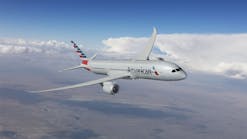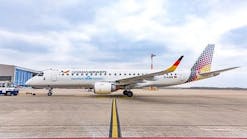SEATTLE (AP) -- The Federal Aviation Administration plans to investigate safety complaints by three Alaska Airlines mechanics relating to the lubrication of a part on an MD-83 jet -- the same part that failed and caused the crash of Alaska Flight 261 in 2000, a newspaper reports.
Alaska Airlines' chief executive on Thursday also ordered all 26 of the airline's MD-80 series aircraft inspected to determine whether the planes' jackscrew assemblies were properly lubricated.
The mechanics were working Jan. 10 in Seattle when they said they found no grease on the jackscrew, a crucial part responsible for moving the stabilizer, the winglike structure on the jet's tail, The Seattle Times reported Thursday.
The part showed no signs of excessive wear, and after it was lubricated they returned the plane to service. But they were concerned because federal officials determined that poor maintenance practices, lack of lubrication and excessive wear led to the catastrophic failure of the jackscrew during Flight 261, which killed all 88 people aboard when the Boeing MD-83 crashed into the Pacific Ocean off Southern California in January 2000.
Shortly after the crash, the FAA issued an emergency directive ordering more frequent lubrications of jackscrews.
Maintenance records indicated that the MD-83's jackscrew was lubricated during a check at an Oklahoma City facility, AAR Aircraft Services, on Nov. 3, 2004. But reports from the three mechanics said it appeared that never took place.
AAR is one of two outside repair stations used by Alaska since it began outsourcing major maintenance work late last year to save money. The airline closed down its heavy-maintenance base in Oakland, Calif., cutting several hundred jobs. AAR insisted the work was performed properly.
In one statement, mechanic Larry Reed, an inspector, wrote that he found ''no evidence of lubricant'' on the jackscrew, including the gimbal nut and the upper and lower fittings of the assembly.
''It is my belief based on my experience of previously performing this inspection ... that this jackscrew was not lubed at the last inspection interval on November 3, 2004,'' Reed wrote.
Mechanic Jeff Shira, who was assigned to lubricate the jackscrew, wrote that it was ''extremely dry, like it never got lubed'' during the November check.
Shira wrote the jackscrew should be ''thoroughly coated in Mobil 28 grease.''
The third mechanic, Herbert Johnson, wrote that while assisting Shira, he found ''no apparent grease on the shaft or above and below the gimbal nut.'' He stated he found only ''black residue'' on the shaft.
Their statements were obtained by The Times through another party. Alaska declined to let the newspaper interview the mechanics, and spokeswoman Caroline Boren said the airline found no evidence to support the mechanics' account of the Jan. 10 incident or of a second incident reported last week by one of the same mechanics.
In a statement posted Thursday on Alaska's in-house Web site, CEO Bill Ayers said the company would cooperate fully with the FAA inquiry.
''Allegations that maintenance procedures have not been properly followed are extremely serious to us, especially as they relate to jackscrew lubrication,'' Ayer said.
He said he was confident the investigation would show Alaska complies with safety procedures and FAA directives. ''Nevertheless, I am asking our Maintenance and Engineering Division to inspect our entire MD-80 fleet to ensure proper jackscrew lubrication,'' Ayer said.
AAR spokesman Chris Mason told The Times that the company's work on the jackscrew ''was performed, inspected and approved in accordance with FAA and manufacturers' approved procedures by FAA-certified technicians and inspectors,'' he said, adding the agency recognized AAR in June for outstanding training.
John Goglia, a former National Transportation Safety Board member who served on the board during the Flight 261 investigation, said the mechanics' written accounts of the incident accurately described the appearance of a jackscrew without grease. Goglia said red-colored grease should have been visible on the jackscrew.
''Mobil 28 is a grease that lingers,'' he said. ''It has great adhesion properties. When you get in on something, it stays red.''
''This report should be a wake-up call for the quality-assurance department of Alaska Airlines that they need to step up the surveillance of their outsourced maintenance,'' Goglia said.
Alaska is legally responsible for the outsourced work under federal air-safety regulations and is required to have its own quality-control inspectors on site. The airline could not determine the precise condition of the jackscrew cited in the Jan. 10 incident because the mechanics had applied new grease so that the plane could be returned to service.
FAA spokeswoman Laura Brown in Washington, D.C., said the agency ''will interview all of the people involved,'' including the Alaska mechanics as well as those working for AAR.




